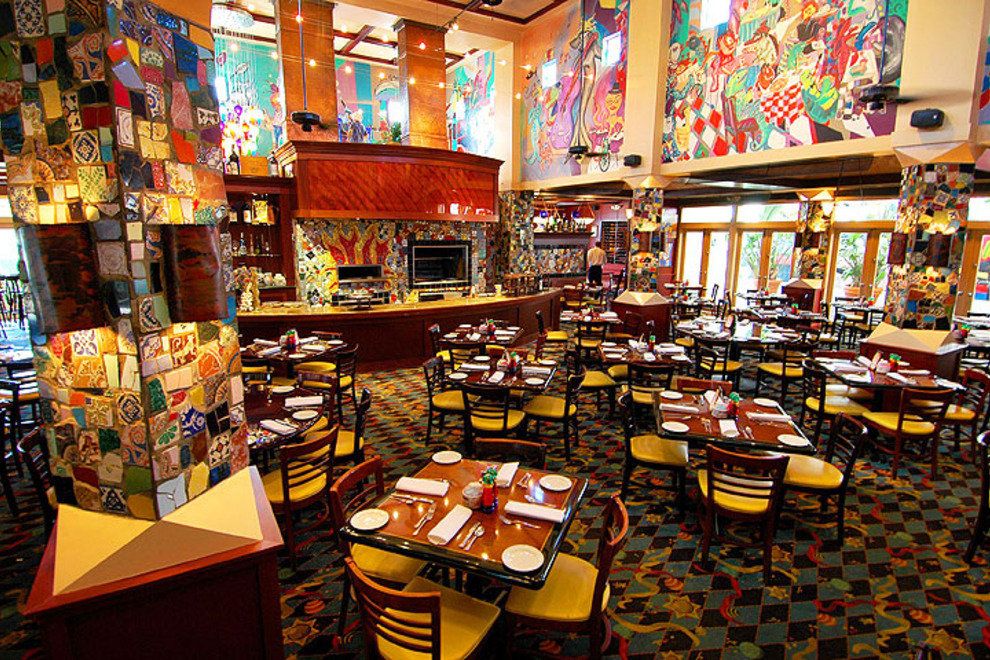Swartz is certainly spot-on about the clientele, the moneyed, the society names, the politically connected, who were the main story concerning the restaurant over the years, which was the focus of the article. But what was barely alluded to, which I thought was very important, was the design of the original restaurant, a testament to La Grigila’s founder, Tony Vallone.
Tony Vallone had an excellent sense of style and design. I don’t believe that he received enough credit for that, and it extended to all of his restaurants, at least from the 1980s on. Grotto featured a sprawling, fun and often bawdy, well-rendered mural adorning the walls and columns featuring Naples-inspired figures street scenes and those from the Italian commedia dell’arte that was part of the draw of the restaurant. La Grigila was maybe even more attractive, with its seaside motif, if just slightly more restrained in the content of its décor. But both gorgeous and still kinetic and in a key that alluded to Italy, coastal Italy for well-heeled foreign vacationers. That beautiful design was actually replicated quite closely, at least for a short time in Dallas in the 1990s, as Joey’s, opened for Vallone’s wayward son. The second act of Anthony’s, coming after Grotto and La Griglia was completely different, but strikingly handsome. The latest incarnation of Tony’s, which opened in 2005, has an intriguing modern setting, light but sumptuous, punctuated with dramatic late-century works by Robert Rauschenberg and Jesus Moroles.
The Landry’s restaurants, and all of Tillman Fertitta’s properties, lack that sense of style and design that Vallone possessed. It is immediate obvious with the new location of La Griglia, housed in the space that was another, very popular Italian-American restaurant, Nino’s, for several decades (which is strangely not mentioned in the article; and neither is the clear star of that new development, the terrific Katami, from top chef Manabu Horiuchi, steps from La Griglia). I’ve walked through the new La Griglia and it’s attractive; white tablecloths throughout, and a neat patio with a separate small bar, all highlighted with pandering photographs of Italian movie icons and scenes. But it seems like a chain restaurant, which it essentially is. It’s lacking personality that both its previous location and the previous tenant had.
You probably don’t want to visit for the food, either. I never really went to La Griglia or Grotto after those became Landry properties. The items were certainly not as well-prepared nor as interesting as when those were Vallone-run. What was one of Esquire’s best new restaurants in the country when it opened in 1991 – as were Vallone siblings Grotto and Anthony’s in other years – was an afterthought for most discriminating diners after Landry’s took over. As if stuck in amber, the menus even do not seem to have changed that much from that time, over two decades ago, and appear quite similar at the new La Griglia address, too, if pricier. There is still no reason to visit La Griglia, unless you were a cosseted regular, I guess.
Maybe it is better now, but why bother there are much better Italian restaurants to be found in Houston. Alba, Amalfi, Bari, Da Marco, Tavola, Potente, and, yes, Tony’s, too, to just name a few. And a few additional suggestions.
The dining room at La Grigila, as it was for over three decades.

 RSS Feed
RSS Feed

